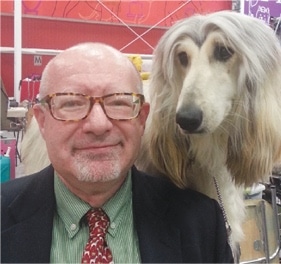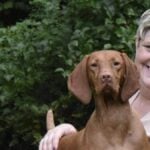
Home » Janet York | Piccadil Cavalier King Charles Spaniels
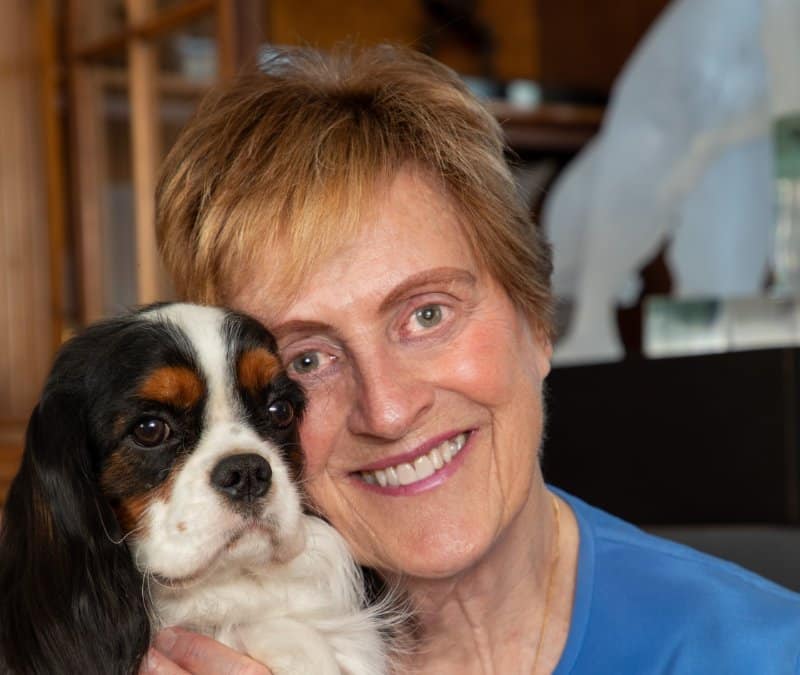
Janet York: I was born and raised in Manhattan, with most vacations spent in Charlottesville, Virginia.
Janet York: As a family we always had one dog growing up, but my interest in breeding and showing began in 1983 when I found The Encyclopedia of Dog Breeds. We had always had Cocker Spaniels, so I loved the spaniel temperament. For my first dog, I was looking for a spaniel that would be good for bird hunting, small enough to fit in a Sherpa bag, and get along with kids and cats.
The Cavalier King Charles Spaniel fit the bill and I found my first one in England, at Peggy Talbot’s Maxholt Kennel. That first Cavalier, Piccadilly, began my lifelong passion for the breed. My kennel name of Piccadil is a tribute to him.
Janet York: I did extensive reading and research, but at the time I got Piccadilly, the Cavalier had not yet been accepted into the AKC Toy Group. There was an original Cavalier Club, that still exists today, the CKCSC-USA. The club held monthly specialty shows that I was able to attend. It was there that I met so many helpful exhibitors, breeders, and judges; too many to name them all. I also spent a week in England, a trip that included attending Crufts, and met many breeders at their kennels who taught me so much about the breed.
Janet York: I breed for show conformation, temperament, and good health. I breed for healthy dogs that meet the breed standard and exude the outgoing, happy temperament that the Cavalier is known for. Once I have a litter on the ground, I watch the puppies grow up until they are four months old. In that time frame, I determine where each puppy should be placed. Some go to performance homes; these are the most outgoing puppies, and will go on to do Agility, Obedience, Rally, and Scent Work.
Other puppies are more laid back, making them perfect as family pets. Many of my pet owners go on to do therapy work in hospitals and nursing homes. My bitches are retired from breeding after no more than three litters. I then send some to their “furever” homes if they are best suited to be family pets, while others continue with me in the performance ring. For example, just last week I placed one of my favorite bitches, Blondie, who was BOS at the Westminster Kennel Club show in 2021. She is now living with two older Cavaliers at Green Chimneys farm in Brewster, New York, where she will be bringing joy to special needs children.
Janet York: I have two locations where my dogs live. In my apartment here in NYC, I house seven to nine dogs, including bitches that I am currently showing. When my bitches go into heat, they go to my country house in Pound Ridge, New York. When a bitch is in whelp and ready to deliver within a week, she goes to my Dog Nanny, Kathleen Malone, who whelps the litter and keeps them for nine weeks. At nine weeks they get their first vaccine, and then come to my apartment and live in a special area away from the other dogs.
It is during this time, from nine to 16 weeks, that I train them in basic obedience, with lots of fun activities on various exercise equipment and challenging puzzles. When they go to their new homes, they are already trained on the lead, basically house-trained, and know the hand commands for down, sit, come, and heel. My older dogs can freely roam in the kennel area of my apartment and are crated at night, except for the few that go to bed with me.
My first and forever love, who was the most titled Cavalier of his time, excelled in the show, obedience, and agility rings. He was also one of the first dogs ever to compete in canine freestyle and he was exhibited throughout the country to the theme of Handel’s “Water Music.” He was a wonder and he left the crowds crying with joy when he performed.
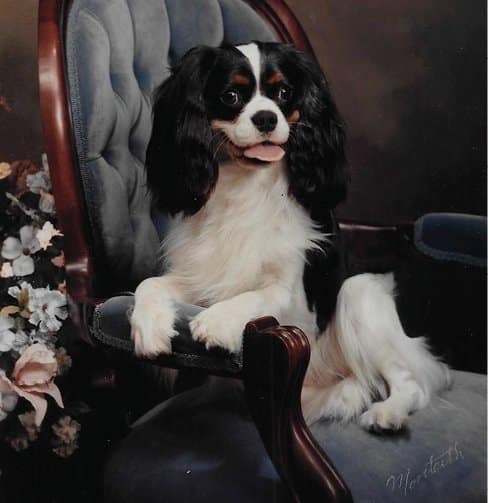
Corneel was my first imported dog from Hans Boelaars of the Netherlands. He arrived in 1995 and then, in 1996, when Cavaliers were admitted into the AKC Toy Group, he became my first Special. He was amazing, both in the show and performance rings. He gave me my FIRST Best in Show, and then three more! The first was under judge Arlene Czech at a show in Virginia in 1999, and I won over a top handler who is now a judge whom I continue to show under today.
On one special day at the Eastern Dog Club show in Boston, Corneel was in the Agility ring at 7am and was successful, then he went on to Novice Obedience and qualified, and finally on to the Breed and Group rings under Michele Billings who gave him the Breed and a Group 1. The BIS ring was the only ring where we did not succeed. What a huge year 1999 was for Corneel, earning all four of his BIS wins. (I cannot find the stats for the years Corneel was being shown. I think he was No. 1 for either one or two years.)
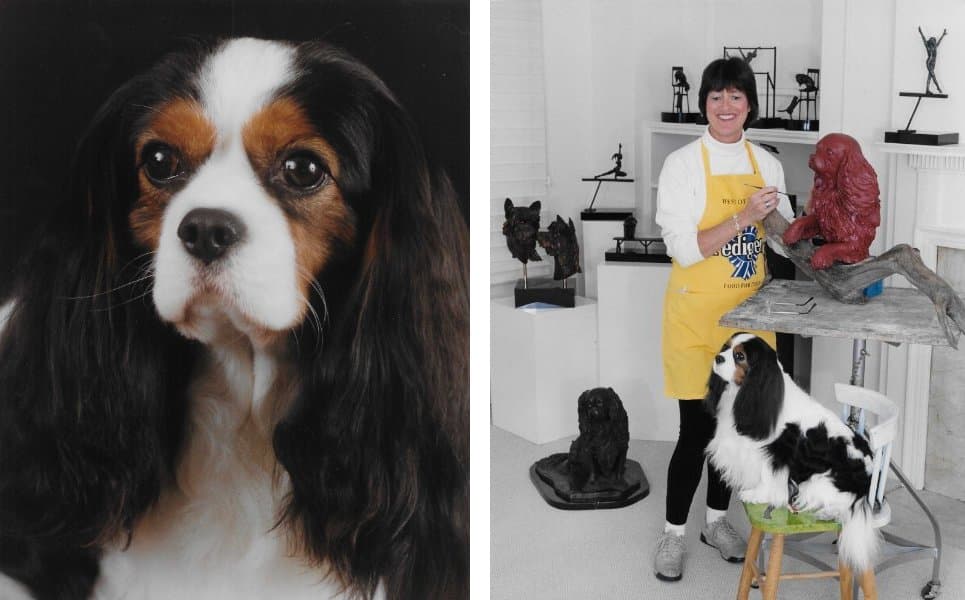
Pippin was my second imported dog from Hans, and he was ranked No. 1 in 2002 in AKC with two BIS and multiple Specialty wins. He excelled in the agility ring, and became my second freestyle dog. We were slated to go to the huge Netherlands show in November 2002 and exhibit using the Olympic Theme, but unfortunately, Pippin hurt his leg and we were unable to go.
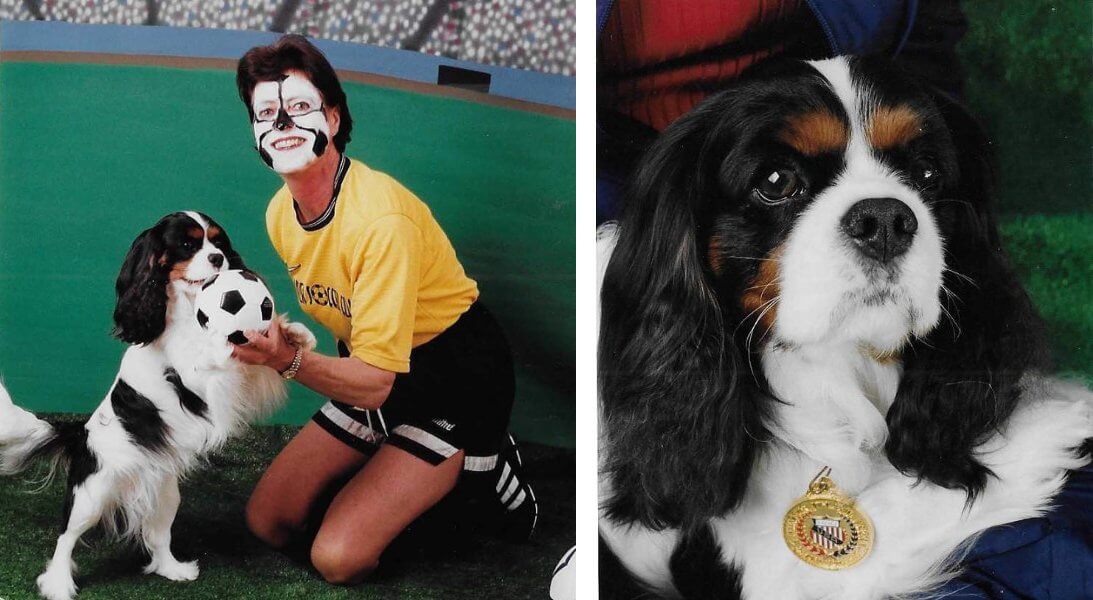
Fredrik, my third imported tricolor from Hans, was one of my sweetest dogs. He never made it to No. 1, but in 2005 he ranked No. 2 in AKC, with three BIS and multiple Specialty wins in his career. Fredrik could do anything and everything that I asked of him, and he was my constant companion. He had the softest expression and kids adored him, a trait he passed on to his many offspring, one of whom is my Bravo.
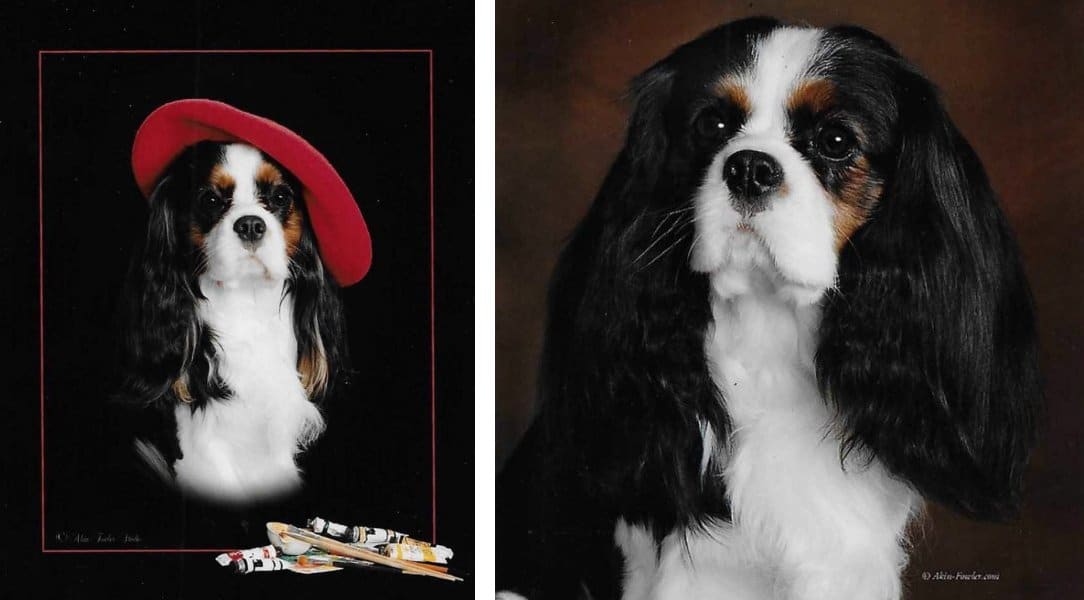
Mondrian was my fourth imported dog from Hans and my most successful in the breed ring. Mondrian, during the years of 2008, 2009, and 2010, was ranked No. 1 in AKC. He racked up 15 BIS wins which, to this day, remains the record for the most BIS wins achieved by a Cavalier. He won BOB at the Westminster Kennel Club show in 2006 and 2010, and to cap it off he won the AKC Cavalier National Specialty in 2010 under judge Ms. Sandra Goose Allen. During his prestigious career he also took home many Specialty wins as well as performance titles.
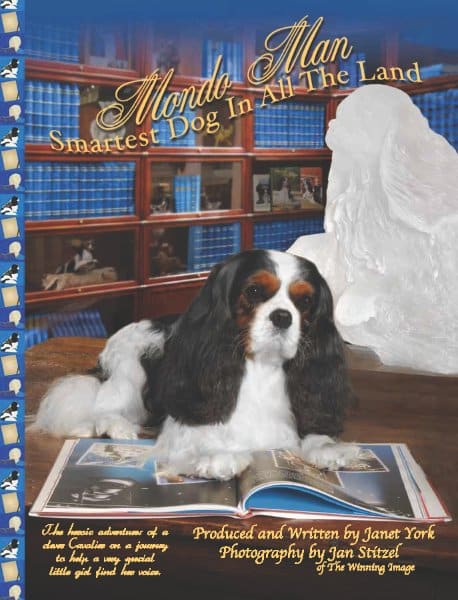
After Mondrian, Hans in the Netherlands began an interest in Chihuahuas and a renewed interest in Dachshunds. At this time, I began my own breeding program in a serious manner. My first successful champion dog of my breeding was Twist, reaching No. 3 in AKC in the years of 2013, 2014, and 2015. He was my first Blenheim Special and his most important win came at a Regional Specialty, after our Cavalier National in 2013. The breeder-judge was Ms. Annette Jones from the UK. This was an exciting win for me, especially because I bred him.
Bravo, my sweet boy and the son of Fredrik, is an AKC champion but his expertise has always been in the agility ring! He earned the invitation to participate in both Westminster Kennel Club agility trials in 2021 and 2022 at the Lyndhurst site. It was such fun to be there and to cheer him on with my friend Teri Nolan at the helm. Bravo went on to earn a MACH 1 and 2 before retiring at the age of 10. He now lives a luxurious life in my Pound Ridge home.
Catchy, my tri boy, is amazing! Kids simply adore him and he never misses a chance to cover everybody in kisses. His love outside of the show ring was, and still is, Rally. Originally, he ended with an RAE 2, the highest level at that time. Now that there is a Masters Class added, he is back pursuing a RACH at almost 10 years old. In the conformation ring between the years of 2015 to 2019, he ranked No. 4 twice. He was a favorite in the Owner-Handled ring and in 2017 he ranked No. 1 of all breeds in Owner-Handled. This was a major feat for us as a team, and a very exciting moment in my show career.
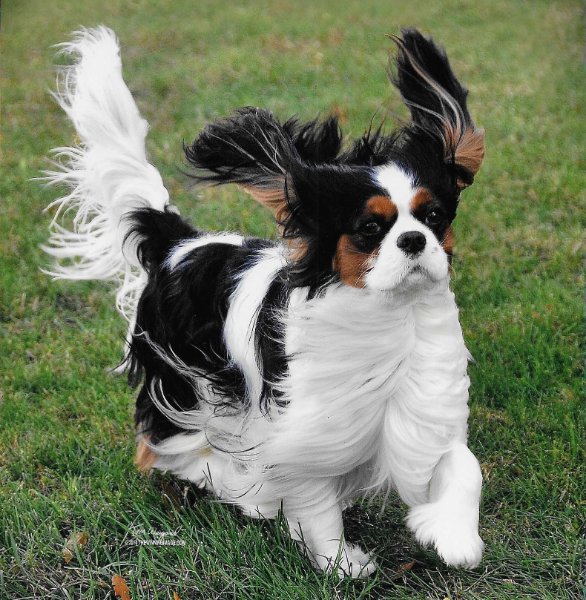
I have always known that Catcher has a phenomenal nose and now this past year he has taken up Scent Work where he excels in all five elements. The elements are container, exterior, interior, buried, and handler discrimination. I’m about to run off to class right now with him and the next generation of nosers, but, if I were still bird hunting, he would be following in Piccadilly’s pawsteps.
Treasure is my present homebred, still in the breed ring and, like his ancestors before him, is at the Platinum Grand Champion level. He loves the show ring and your lap, preferably with the television on for him to watch while he rests like the prince he is. I have recently introduced him to the Scent Work world, and he is taking to it like a fly to honey. To be continued…
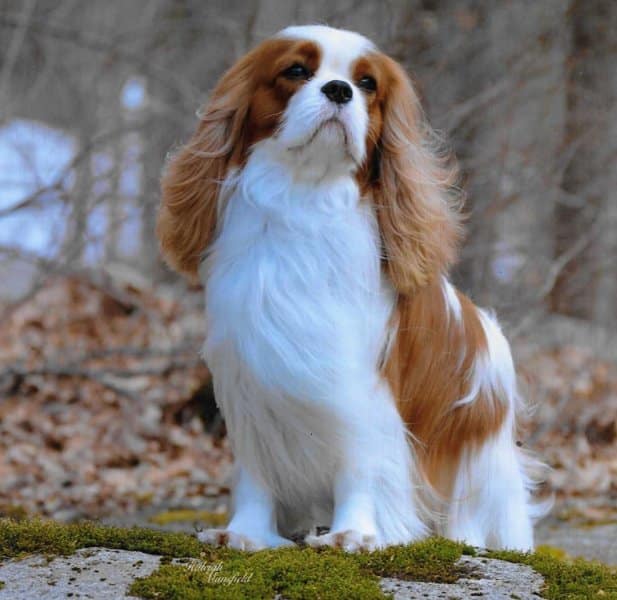
Janet York: Yes, I do compete in multiple disciplines beyond conformation as you have seen above. I do this because I love the teamwork that occurs when working with my dogs, and I believe that dogs need a job to keep their minds active and healthy. They learn their boundaries through their performance training, and I cannot express how happy they are in these venues. In short, a trained dog is a happy dog.
Janet York: On a positive note, I think the Cavalier is becoming healthier due to responsible breeders testing for heart, eyes, hips, patellas, and screening for Syringomyelia (SM). We are also not breeding until our dogs and bitches are two years old, and I think this has made a big difference in the longevity of our Cavaliers. The first trend that bears watching is temperament. We are seeing some shy, skittish, and sometimes aggressive Cavaliers. We do not want this in our breed.
Another trend to watch is structure. The Cavalier is supposed to have reach and drive. I am seeing too many with straight shoulders, unable to reach, and poor rears which inhibit their drive from behind. A third trend that bears watching is the shortening of their legs. Some have become so short that I have heard people calling them “Cavadachs,” making comparisons to the Dachshund. The Cavalier is supposed to be slightly longer than tall. In some instances, we are not seeing that now.
As mentioned above, I see good and bad things happening in our breed. Adding to this, the Cavalier has unfortunately become a favorite of the puppy mills. Our rescue organizations with each club are struggling to keep up with the increased influx of Cavaliers that need help both behaviorally and physically.
In encouraging newcomers to the breed, I ask all my buyers to research the ACKCSC and the CKCSC-USA clubs. I want them to attend conformation and performance events, and explore the various educational resources that both clubs offer. When I sell my Cavaliers to families with children, I try to get the kids interested in Junior Handling and I personally help them along the way. I think this is the best way of continuing the love of the sport.
Janet York: Well, I am not getting any younger, so I don’t anticipate personally continuing my breeding program into the far future. I am looking for the right person to whom I can hand over the reins when I feel the time is right.
Janet York: I love being with my children. I love going to the theater. I love to travel to new places near and far. I’m a bit of an explorer at heart. I’m an avid reader, and perhaps there is another children’s book to write on my bucket list. I am sad to say I can no longer sculpt due to arthritis in both of my thumbs. I am now retired from my practice as a marriage, family, and sex therapist. For fun, when people ask me for help, as a therapist, I tell them, “I’ve given up sex… and gone to the dogs.”
The best way to ensure a long and happy relationship with a purebred dog is to purchase one from a responsible breeder. Not sure where to begin finding a breeder?
Contact the National Parent Club’s Breeder Referral person, which you can find on the AKC Breeder Referral Contacts page.
Did you know nearly every recognized AKC purebred has a dedicated rescue group? Find your new best friend on the AKC Rescue Network Listing.
Showsight Magazine is the only publication to offer dedicated Digital Breed Magazines for ALL recognized AKC Breeds.
Read and learn more about the graceful Cavalier King Charles Spaniel dog breed with articles and information in our Cavalier King Charles Spaniel Breed Magazine.
Error embedding FlippingBook shortcode, please check the flipbook url. (https://digital.showsightmagazine.com/view/862490/)
If you enjoy the Cavalier King Charles Spaniel, help us educate the community by sharing it.
